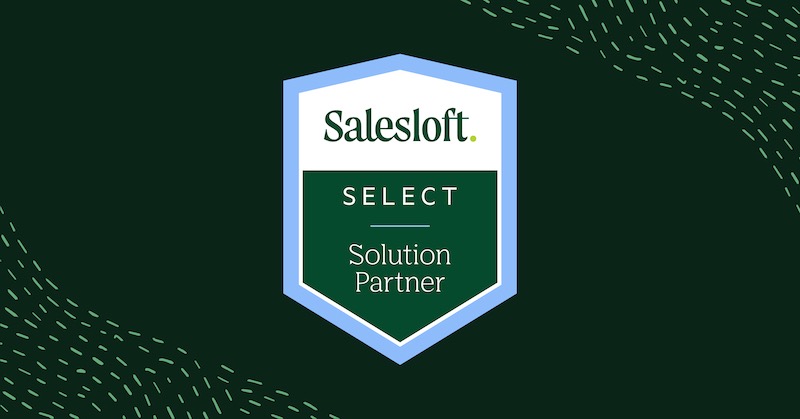What the Salesloft Partner Program Means to Us
Salesloft recently announced a Solution Partner Program for companies that recommend and implement Salesloft tools to maximize revenue for their clients. We are thrilled that Revenue Ops LLC has achieved Select tier status within this partner program.
We are excited about formally partnering with Salesloft. We’re very comfortable with the platform. It is our sales engagement software of choice when we’re working on improving our clients’ workflows.
This partnership uniquely positions us to have access to Salesloft resources. We are particularly excited about experiencing cutting-edge product feature releases. Salesloft is committed to providing enhancements that reflect current sales process trends. And, we’ve found them to be really good about responding to customer feature requests since they’re based on real-world use cases.
We’re looking forward to being privy to future integration and implementation opportunities. We appreciate that improving an operational process does not necessarily mean installing completely new programs. Sometimes existing programs just need a little boost to make them more useful. Integrations enhance our strategic approach when developing the technology and workflows for our clients because it saves time when we implement existing applications to complement new software. It also streamlines the training and onboarding process.
Ultimately the most significant benefit of this partnership is transferring all of these perks to our clients. So when you work with us, you can be confident that you’re receiving the highest level of service.
Best Features of Salesloft
We think the biggest and best benefit of Salesloft is that it allows small but mighty teams like us to operate like a large, Fortune 500 company. There might be strength in numbers, but sometimes less is more.
Thanks to the robust and intuitive nature of Salesloft, we can communicate at scale with our prospects and customers. These days, resources are scarce just about everywhere, and there isn’t enough time in the workday to accomplish everything we need to do. But, if we invest a little time in building relationships with our contacts by defining audience segments, configuring some preset messages, and establishing a reasonable distribution frequency, we can maintain top-of-mind exposure effectively and efficiently.
Salesloft provides the tools we need to automate our communications along with a high degree of personalization and customization. As a result, we can interact with our contacts strategically and regularly. In addition, Salesloft offers one-to-one SMS messaging capabilities and custom videos so that we can engage in direct but less invasive ways.
Salesloft also makes it easy to connect and scale our operations through integrations. Therefore, we don’t have to reinvent the wheel when implementing new technology. Salesloft integrates seamlessly with a number of sales and marketing applications, including Salesforce.
As a Salesforce partner, we combine data from our CRM and sales engagement activities to paint a clear picture of our interactions. And we use the data to evaluate our tactics and optimize them accordingly.

Salesloft Improves Our Operations
Salesloft is designed to help sales representatives be productive and focus on their regular sales tasks. They don’t have to be bogged down by mundane administrative tasks because Salesloft automates and synchronizes tasks like recording conversations, scheduling meetings, and designing and distributing reports.
Sales representatives feel more organized and aware of their responsibilities. Salesloft makes it easy for them to understand where their contacts are within the sales process. And they can easily plan the next steps and follow-ups so that nothing falls through the cracks.
From a customer experience perspective, Salesloft enables customer service representatives to stay on top of renewals to maximize revenue. Avoiding missed opportunities goes a long way to ensuring recurring earnings and maintaining customer satisfaction. In addition, positive experiences with customer service help to extend the customer lifecycle.
Why Salesloft
When considering a sales engagement platform, it’s impossible to ignore Salesloft. It’s a market leader, and for a good reason. Salesloft focuses solely on optimizing business development opportunities and streamlining the sales cycle.
We at Revenue Ops LLC are intentional about aligning with market leaders. Salesloft is recognized by G2, Forrester, and TrustRadius. We help our clients maximize their revenue and scale their business by working with best-in-class products.
We are an experienced team of sales, marketing, and customer success professionals committed to helping clients improve their performance. We apply our deep knowledge of CRM systems like Salesforce and sales enablement tools like Salesloft to optimize sales potential by stimulating and tracking customer interactions. Learn how we can help you implement a strategy to improve revenue operations and maximize your growth.


